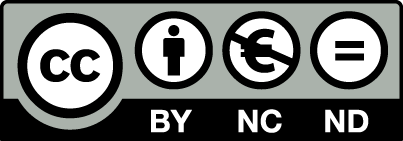Bitte verwenden Sie diesen Link, um diese Publikation zu zitieren, oder auf sie als Internetquelle zu verweisen:
https://hdl.handle.net/10419/281167 Erscheinungsjahr:
2023
Schriftenreihe/Nr.:
Working Paper Series in Health Economics, Management and Policy No. 2023-06
Verlag:
Universität St.Gallen, School of Medicine, Lehrstuhl für Management im Gesundheitswesen, St.Gallen
Zusammenfassung:
Background: Compulsory healthcare insurance in Switzerland entails a deductible system for cost-sharing between insurer and insuree up to a chosen deductible1. No study has so far tested the presence of price sensitivity for healthcare resources consumption after exceeding one's chosen deductible. We address this research gap by focusing on the effect of exceeding the deductible on insurees' healthcare consumption. We present three contributions: first, we determine the presence of price sensitivity for healthcare consumption; second, we identify whether this leads to a change in consumption for overuse-prone service groups; third, we explore whether supply side structures influence this change in consumption. Methods: For our analyses we make use of a detailed and anonymized insuree-level dataset provided by the Groupe Mutuel. We included data for all insurees older than 25 that exceeded their deductible in 2018 and did not give birth between 2017 and 2019. We focus our analyses on the 2,500 deductible group2 (sample size of 12,135 observations) and provide insights on the 300 deductible group (sample size of 212,249 observations) for a comparison. Our empirical strategy included three steps. First, to control for insurees' individual time-varying and constant characteristics, we ran fixed effects ordinary least square regressions of weekly healthcare expenditures on insuree characteristics. Second, on the residuals obtained from the fixed effect model (i.e., the unexplained healthcare expenditures variation), we ran insuree-level regression discontinuity in time models. Finally, we aggregated the obtained parameters by simple mean. Starting from an explorative specification of the dependent variable including all service groups, we specified our dependent variable in two additional ways: first, we excluded all complex services; second, we only included services for which we could find evidence in the literature that they might be overused. We used the first specification for patient subgroup analyses and sensitivity analyses. The second specification was used to explore potential supply-side structure effects, measured via the density of medical specialists per postal code. Results: We find a positive difference between healthcare consumption before and after exceeding the deductible, however this increase in consumption is not significant. For insurees without continuous healthcare expenditures in the 12 weeks before exceeding the franchise, we find a weakly significant increase in subsequent healthcare expenditures, which is however not significant at 95% confidence level. When stratifying insurees based on retirement status, premium reduction, and number of chronic illnesses, we do not find significant effects on the healthcare consumption pattern for any of these subgroups. Finally, supply structures do not significantly influence healthcare consumption patterns after exceeding the deductible. Conclusions: Our results show that, while there is an overall pattern indicating a higher consumption of healthcare resources after exceeding the deductible, this outcome is insignificant across all specifications. Our findings show that insurees are generally not price sensitive and that the deductible system does not create significant demand-side financial incentives for the consumption of healthcare resources. As cost-sharing solutions have been introduced to curb the rise of healthcare spending, our findings suggest that the deductible system is an effective cost-sharing solution for Switzerland.
Schlagwörter:
health insurance
deductible system
financial incentives
price sensitivity
demand for healthcare services
deductible system
financial incentives
price sensitivity
demand for healthcare services
JEL:
I10
I12
I13
I12
I13
Dokumentart:
Research Report
Datei(en):
Datei
Beschreibung
Größe
Format
Publikationen in EconStor sind urheberrechtlich geschützt.

